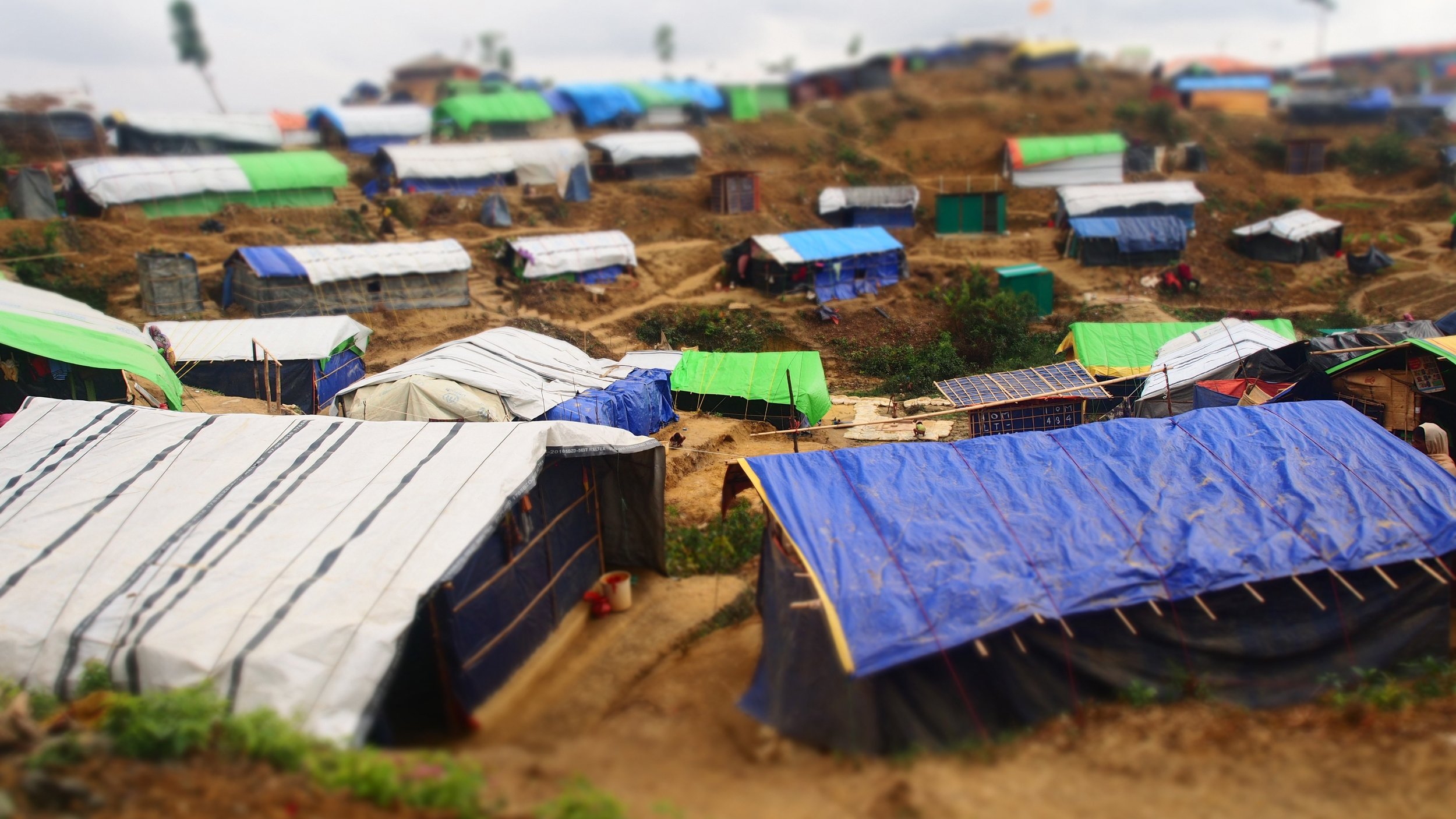ROHINGYA CRISIS
I witnessed the persecution of the Rohingya in 2017. In August that year, hundreds of thousands of people fled the worsening violence in Myanmar's Rakhine State, described as ethnic cleansing and genocide by UN agencies and human rights groups. This is the haunted expression of a Rohingya man now living in one of the sprawling camps in the Cox's Bazar district of Bangladesh. In the camps, I heard horrific stories of murder, gang rape, and children shot or and burned alive. Click on the image to read my account of the atrocities for the Guardian newspaper, 'In the name of humanity, don’t look away from the plight of the Rohingya people.'
For hundred of thousands, the only hope of survival was to walk for days or board boats bound for the relative safety of a foreign land just across the border.
I was on assignment with Save the Children International; sent to Bangladesh to report on the humanitarian crisis. Through humanitarian deployments, I've witnessed many of the worst humanitarian disasters of the last 20-years and this one I found most harrowing. The horror of the violence perpetrated on one human by another will always haunt me.
In the southern Bangladeshi district of Cox’s Bazar I heard from child survivors and their families about the most horrific atrocities. This includes killing and maiming, abductions, sexual violence, persecution and forced displacement.
I shudder at the account of a soldier dousing a pregnant woman in petrol, then setting her on fire. And the story of a solider throwing a new-born child on a fire. Click on the image read Save the Children's report, 'Horrors I Will Never Forget'.
In Bangladesh, the Rohingya people may have escaped murder, torture and rape but they faced new perils. Even now, they are forced to live cheek by jowl in sprawling camps.
The conditions were wretched during my visit. When the rain fell the earth turned to grotesque thick clay like mud, making the shortest journey slow, perilous and filthy.
A city sized population lived, still live, in cramped arduous conditions. This they endure after fleeing the horror of human rights atrocities in Myanmar’s northern Rakhine state.
The entire area where they now live was once jungle. Now it’s a maze of shanty structures canopied with flimsy plastic sheeting.
Among those forced to flee, heavily pregnant women, the elderly and children. In fact, a staggering 378,000 children fled northern Rakhine state and horrific violence.
At the time of my visit, one in four children under five suffer from acute malnutrition. Poor access to clean drinking water and basic health services have sparked concerns for cholera and other water-borne diseases.
Razia*, 7, lives with her parents, four brothers and sisters in the camps for the Rohingya people in Bangladesh. In August 2017, the family fled extreme violence in Myanmar. Razia's village was set on fire. The family hid for two days in the jungle. They managed to reach safety after eight days. I sat with Razia in their shelter of bamboo and flimsy plastic sheeting. "I was very scared when our village was on fire. I kept hoping that we would get to safety. "At first we tried to cross the river [a natural border between northern Rhakine State in Myanmar and Bangladesh], but we didn't have any money so we could not cross. "After, one boat was coming from Bangladesh so they asked to just board and go without any money, so we crossed the river. Now every time I see people in army uniform I get very scared and start to cry," said Razia. Razia has escaped the horror of extreme violence. Now she faces a new peril; cold overnight winter temperatures. January and February are the coldest months in Bangladesh, yet in the camps it is common to see barefooted children wearing only thin cotton clothing, shorts and t-shirts. "It is very cold from the ground, the floor, and also water from the roof. That is why I have the cough. We only have four blankets for the whole family," added Razia.
Nur Kamal* is from Myanmar's northern Rakhine state. We met in Cox's Bazar, Bangladesh. Nur had fled extreme violence in Myanmar, described by the United Nations top human rights official Zeid Raad Al Hussein as, "... a textbook example of ethnic cleansing." Sitting on the floor of Nur Kamal's flimsy but spotlessly clean shelter, he told me how one of his daughters was killed during the violence. How she died too harrowing describe. It is estimated that 655,000 Rohingya now live in camps in Bangladesh. *The name has been changed.
Among the mass of weary humanity, there were signs of children being children. Here I watched as a young child constructed a kite using nylon and a plastic bag. It then flew high in a cloudless sky.
Shortly afterwards a young boy trudged by shouldering heavy loads of bamboo for building construction. The moments of innocence fleeting.
I'm amazed, time and again, by the resilience of people whose lives have been torn apart by violence and conflict. Among the narrow lane-like corridors of makeshift accommodation I stumbled upon this young entrepreneur ironing clothing. The conditions may be difficult but the Rohingya people are determined to live with dignity.
It wasn't easy to be a witness to human rights abuses. But for the sake of the Rohingya people I very much hope the international community brings the perpetrators to justice.
















